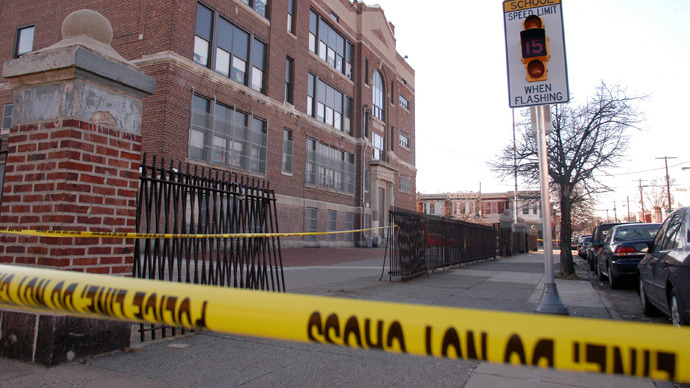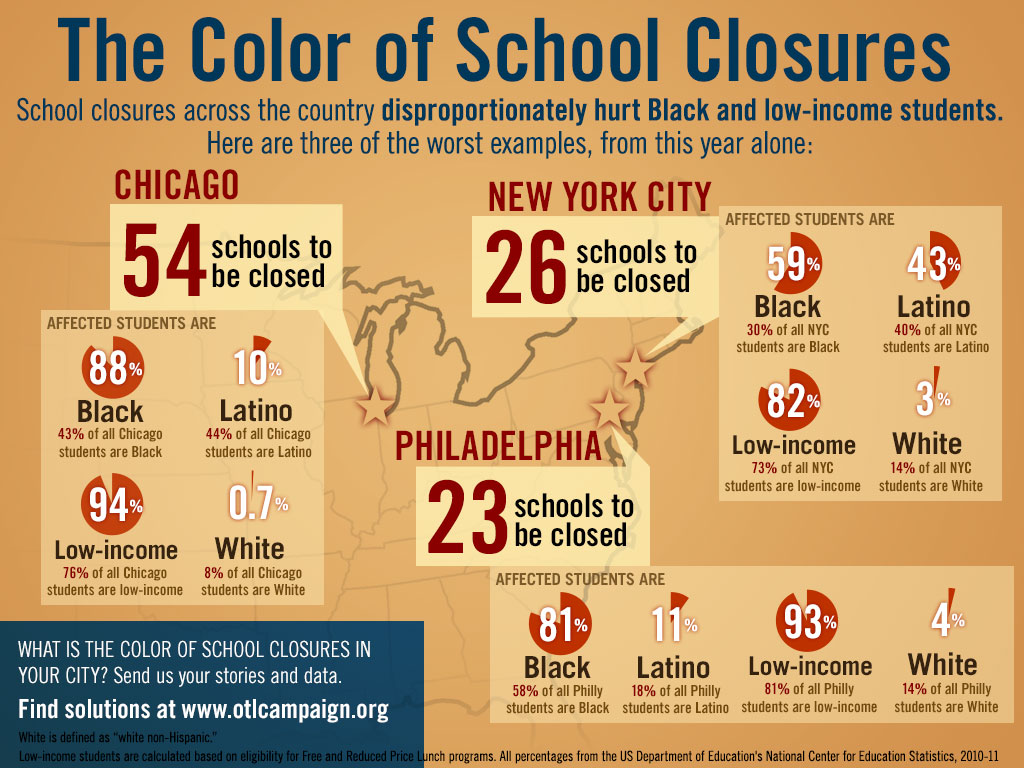Last month that same Commission followed up with a "doomsday" education budget (more like austerity on steroids) that if left unchanged will result in 3,000 layoffs and the elimination of clubs, counselors, librarians, assistant principals, secretaries, athletics, art, music and more. The Philadelphia Inquirer added that "Class sizes would be larger, and schools would have no aides to help manage them or support staff to monitor lunchrooms and playgrounds." Superintendent William R. Hite Jr. called the cuts catastrophic and is requesting money from the state, but local media speculates that the GOP-controlled state legislature is unlikely to pitch in.
Considering that the House just passed a corporate tax break that if approved by the Senate will cost the state an estimated $600 million to $800 million a year, the local media is probably right.
No Money for Schools, But Plenty for Prisons!
Meanwhile, Pennsylvania Republican Gov. Tom Corbett and his Department of Corrections Secretary John Wetzel are spending $400 million to build a brand new prison in Philadelphia, which the Associated Press referred to as "the second-most-expensive facility ever built by the commonwealth, exceeded only by the Pennsylvania Convention Center." It's actually two prisons called State Correctional Institutions Phoenix I and II.
Corbett and Wetzel say the new prison will replace the State Correctional Institution at Graterford, which was originally built to house Philadelphia prisoners, who currently make up 25 percent of Pennsylvania prisoners despite accounting for just one-with of the state's population.
The Philadelphia Inquirer reports:
When finished in 2015, the new cell blocks, classrooms, and support space, surrounded by twin 40-foot fences and a LEED-certified earth berm, will replace the old prison and its reinforced-concrete walls as home to 4,000 offenders, including 700 serving life sentences.But the new prison will have over 800 more beds than the one it's supposed to replace. On top of that, Graterford "will be mothballed rather than demolished so that it could be used again in the future," reports to the AP. And as Decarcerate PA notes, if the past is any indication there's a good chance Graterford will remain a prison:
In 2003, the DOC built a new prison in Fayette County to "replace" SCI Pittsburgh. The DOC claimed that the Pittsburgh prison needed to be shut down because it was too old and decrepit to fix. But in 2007, the DOC reopened SCI Pittsburgh to address overcrowding. Now SCI Pittsburgh - embroiled in lawsuits alleging rampant sexual and physical of prisoners - and SCI Fayette are both filled to capacity. In a recent Daily News article, DOC press spokesperson Sue McNaughton admitted that the existing Graterford will be used to relieve temporary overcrowding in the prison system.This is just one of several myths debunked by Decarcerate PA as part of a campaign to stop the state from pouring over $600 million into prison expansion in Pennsylvania, which is why the grassroots group recently helped organize a 100-mile march from Philadelphia to Harrisburg to demand "a people's budget, not a prison budget."
Exploiting Communities of Color
Education privatization advocates and prison industry profiteers share the same target demographic: poor communities of color (makes the "school-to-prison-pipeline" a lot more literal).
Exhibit A is mass school closures, just the latest scheme in corporate school reform being implemented in cities across the country. But the pain is far from evenly distributed.
In Philadelphia, black students comprise 81 percent of those who will be impacted by the closings despite accounting for just 58 percent of the overall student population. In stark contrast, just 4 percent of those affected are white kids who make up 14 percent of Philly students. And though they make up 81 percent of Philadelphia students, 93 percent of kids affected by the closings are low-income. So there you have it. But it's not isolated to Philly.
(See my latest article for Truthout highlighting racial disparities in DC school closings).
Nevertheless, Wall Street was delighted because fewer public schools mean more charter schools (aka: public funds for private profit). But they can't go after just any public schools. For now, privatization only works when targeting the most politically disenfranchised communities because in the eyes of decision makers their voices don't matter.
Is it any coincidence, then, that these poor and mostly black children grow up to be the targets of an even more ruthless prison industry? The numbers alone speak volumes (from the Sentencing Project):
More than 60% of the people in prison are now racial and ethnic minorities. For Black males in their thirties, 1 in every 10 is in prison or jail on any given day. These trends have been intensified by the disproportionate impact of the "war on drugs," in which two-thirds of all persons in prison for drug offenses are people of color.The U.S. spends around $74 billion a year on corrections. Whether privately or publicly operated, prisons serve as potential cash cows for the companies contracted to build them, clean them, provide food and medical care for their inmates, guard them, operate them and the list goes on.
The same is true for education, except there's even more money to be made. The U.S. spends over $500 billion on K-12 education each year, which is second only to the military. But what you and I see as an investment in our kids, venture capitalists see as an open market with infinite dollar signs.
It seems that anything and everything is more important than educating black children in America when there's a profit to be made.





Oh dear..rather alarmingly "Phoenix I and II" says it all really.